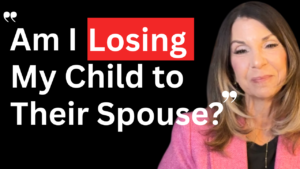Family estrangement is an experience many people face, yet it often goes unspoken due to the stigma and shame surrounding it. Being disconnected from family can feel isolating, confusing, and painful, but it’s more common than most people realize. While reconciling may feel far off, healing doesn’t always mean reconnecting. Understanding the layers of estrangement can reveal how to move forward, either with a path toward reconciliation or a place of personal peace.
In this post, we’ll explore four core aspects of estrangement: why it happens, its impact on family members, how to start healing, and the choice to reconcile or let go.
- Why Estrangement Happens
Estrangement is rarely the result of a single argument or incident. It often develops over the years, with repeated misunderstandings, unmet needs, or unresolved emotional wounds building up gradually. For many, estrangement is an emotional boundary—a way to protect themselves when other communication or resolution seems impossible. This makes sense when considering that chronic hurt, control issues, or emotional abuse may be involved. In these cases, distance can feel like the only safe option.
On the other hand, those who find themselves cut off may feel confused, hurt, or at a loss about what went wrong. Both sides often feel that they were wronged, and they hold onto their perspectives, making it challenging to move forward. However, understanding the complex buildup of estrangement can help all parties see that it’s usually a culmination of factors, not just one argument or action.
The Impact of Estrangement
The emotional toll of estrangement is profound. It impacts mental and physical well-being, affecting the estranged individuals and their extensive family network. Those who are estranged may feel guilt, shame, sadness, or even relief—each emotion valid and understandable given the circumstances. Estrangement can be a source of pain and confusion, making it hard for individuals to imagine how reconciliation could happen or even if they would want it.
For some, this pain becomes an ongoing weight, but it’s essential to know that healing is always possible, even if reconciliation doesn’t occur. Healing may not mean reuniting, but it can mean finding emotional peace within oneself, letting go of guilt, and allowing personal growth to come from the experience.
Healing Doesn’t Always Mean Reconnecting
This brings us to one of the often overlooked truths about estrangement: healing doesn’t always mean reconnecting. In some cases, maintaining distance may be the healthiest choice, especially if past interactions have been toxic, controlling, or abusive. Estrangement is difficult, but a conscious decision made for one’s well-being can be a step toward self-care. It’s not easy to acknowledge, but not every relationship is repairable, and that’s okay.
Some people may exhaust themselves trying to repair relationships with family members who are unwilling or unable to make necessary changes. Reconciliation, after all, requires effort from both sides. If someone isn’t willing to address the issues that caused the estrangement in the first place, reconnecting may only lead to repeated cycles of hurt. Sometimes, choosing to let go of the relationship and focus on personal growth and healing is an act of strength, not failure.
Practical Steps to Begin Healing
Whether or not reconciliation is possible or even desired, there are steps individuals can take to start the healing process. These actions can help those affected by estrangement find peace, even if it doesn’t lead to a family reunion.
- Acknowledge Your Role: Reflecting on one’s actions is a decisive step toward healing. Even if one feels primarily on the receiving end of hurt, self-reflection can uncover ways communication may have broken down or responses may have contributed to the distance. Taking responsibility for one’s part doesn’t mean taking on all the blame; it simply means being open to self-improvement.
- Reach Out Carefully: If you’re considering reconnecting, it’s essential to do so without expectations. A simple message expressing a willingness to understand the other person’s perspective can be more effective than diving into past grievances. Keep it open-ended and respectful, and avoid placing blame.
- Set Boundaries: If reconnecting seems possible, clear boundaries are crucial. For instance, if past issues involve feeling controlled or undermined, be specific about what behaviors are acceptable and what are not. Boundaries help prevent slipping back into harmful patterns, making the relationship safer and healthier for both parties.
- Consider Professional Help: Family therapy or mediation can be beneficial in working through long-standing issues. A neutral third party can provide guidance, keep conversations constructive, and help all parties understand each other’s perspectives. However, therapy is only effective when both sides are open to engaging.
Conclusion: Finding Your Path to Healing
Estrangement doesn’t have to be the end of the story. Whether reconciliation is achievable or the distance remains, individuals affected by estrangement can find a fulfilling life. Healing takes time and involves a commitment to self-care, self-compassion, and forgiveness. The path isn’t always straightforward, but it’s possible to emerge stronger and resilient, with or without a reconnected family.
If you’re going through this journey, remember you’re not alone. Seek out supportive communities, practice patience, and continue to nurture your growth and well-being. The strength to heal lies within you, regardless of the outcome.









